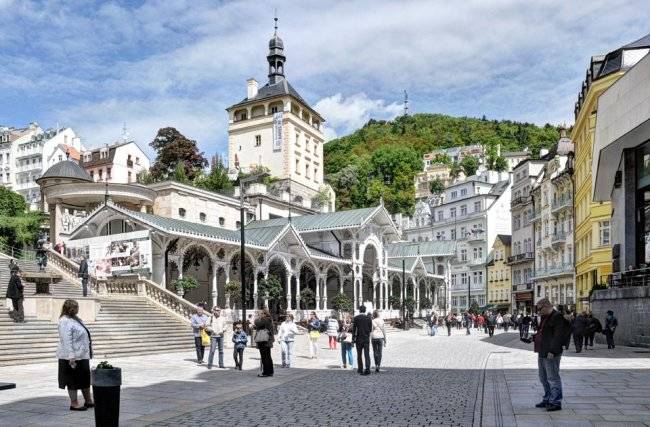An old legend says that the Czech king Charles loved to hunt in these places. One day he wounded a deer, which, gathering all its strength, jumped off a cliff into a hot spring. The animal instantly healed its wounds and ran away. Another legend claims that the king himself accidentally stepped with his injured foot into an amazing stream of hot water. Charles noticed with surprise that his foot no longer hurt. Next to the stream, he ordered the construction of a hunting lodge. This event marked the foundation of the city, which was named after the famous king.
The second part of the name — Vary — indicates that the water in the springs is hot, and people initially literally “boiled” in it. Only in 1522 did a doctor named Payer suggest not only taking baths but also drinking the healing water. Over time, the colonnades and springs of Karlovy Vary gained popularity among the wealthy and famous. Royal and noble families, as well as many aristocrats, sought treatment here.
Mill Colonnade
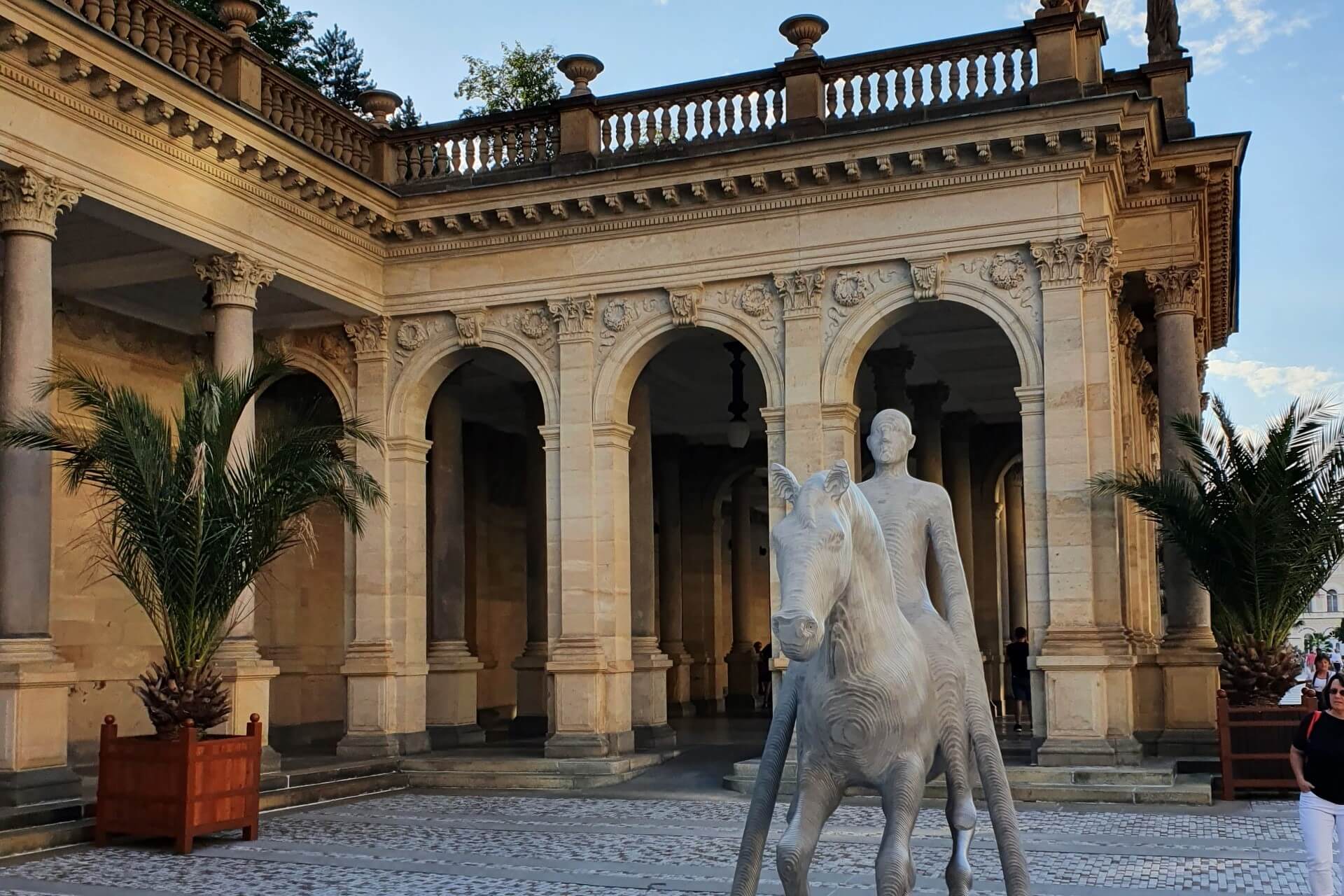
In 1792-1973, the first wooden structure was built in Karlovy Vary at this site. Visitors could take shelter from the weather and walk, which was necessary after drinking the healing water. This significantly increased the popularity of the springs under the structure.
A few years later, in 1811, a new promenade in the Empire style was built by Dresden architect Gisel. In 1811, it was replaced by a stone colonnade in the pseudo-Renaissance style. The project was designed by architect Josef Zítek, who transformed the city’s appearance. In early June 1811, it was ceremoniously opened to visitors.
Twenty years later, part of Bernard’s Rock was demolished, and a northern pavilion was built in its place. This is the largest colonnade, containing five springs — Mill, Mermaid, Prince Václav, Libuše, and Rock. The attic is adorned with sandstone sculptures representing symbolic images of the months. Sculptors Alfred Schreiber and Karl Wilfert worked on them. A striking feature is the orchestral shell, crowned with a bas-relief by Václav Lokvenc.
Garden Colonnade

Once, there was a concert restaurant built in 1880-1881, made from cast iron elements cast at the Blansko Ironworks. The structure was designed by architects Fellner and Helmer and built by Valdert. The complex was ceremoniously opened in early June 1881. Over time, the pavilion deteriorated, and it, along with part of the veranda, was demolished in 1965.
Only the eastern part, known as the Garden Colonnade, has been preserved. This elegant structure was reconstructed in 2000-2002. On one side, it houses the Snake Spring, and on the other, it connects to the Garden Spring, located in the basement of the Military Sanatorium.
Karlovy Vary is recommended for people suffering from gastrointestinal diseases. Each patient is given an individual schedule by doctors for drinking the healing water. It should be consumed fresh and at the temperature it has when it reaches the surface. Special cups with narrow necks are sold in the city to maintain the water’s temperature longer. It is said that water poured into a bottle loses some of its healing properties over time.
Market Colonnade
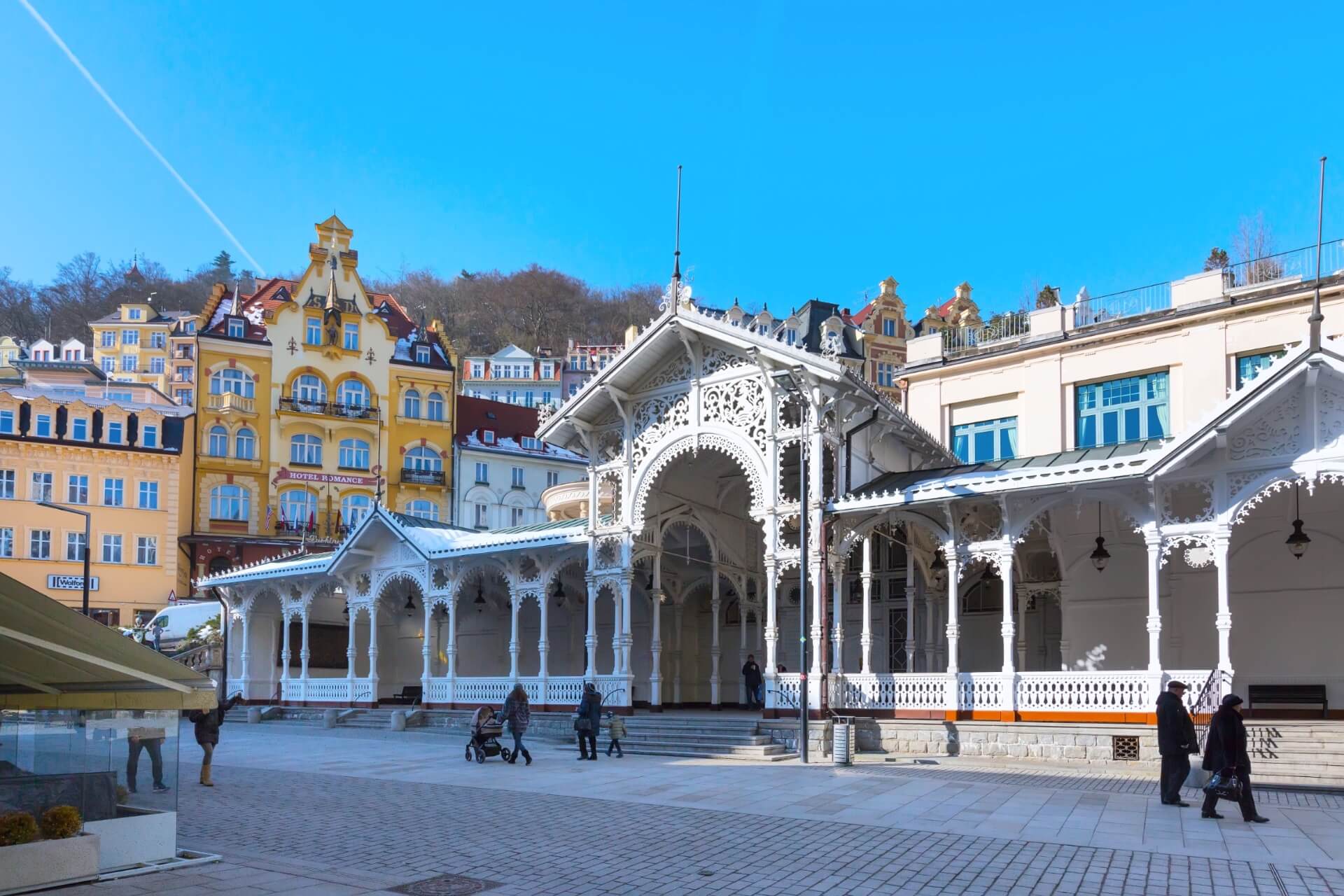
Here, in the heart of the city, there once stood an old bathhouse. After the healing waters helped Charles IV recover, the place gained popularity. A small gazebo and walking veranda were built over the springs. In 1883, an elegant carved promenade in the Swiss style was constructed on the site of the town hall. In the early 20th century, it was extended to the Market Spring. Today, visitors can use water from three springs — Market, Lower Castle, and Charles IV.
The lace-like structure is one of the main attractions of the city. Drinking mineral water is recommended under medical supervision. Of course, a tourist who visits the city for a few days and samples a little from each spring will not harm their health. However, if one consumes mineral water from different springs indiscriminately for 2-3 weeks, it can negatively affect their health.
It is important to remember that the water’s temperature and composition vary, and all elements have different effects on the body. Therefore, consulting a balneology specialist is a mandatory part of the treatment.
Castle Colonnade
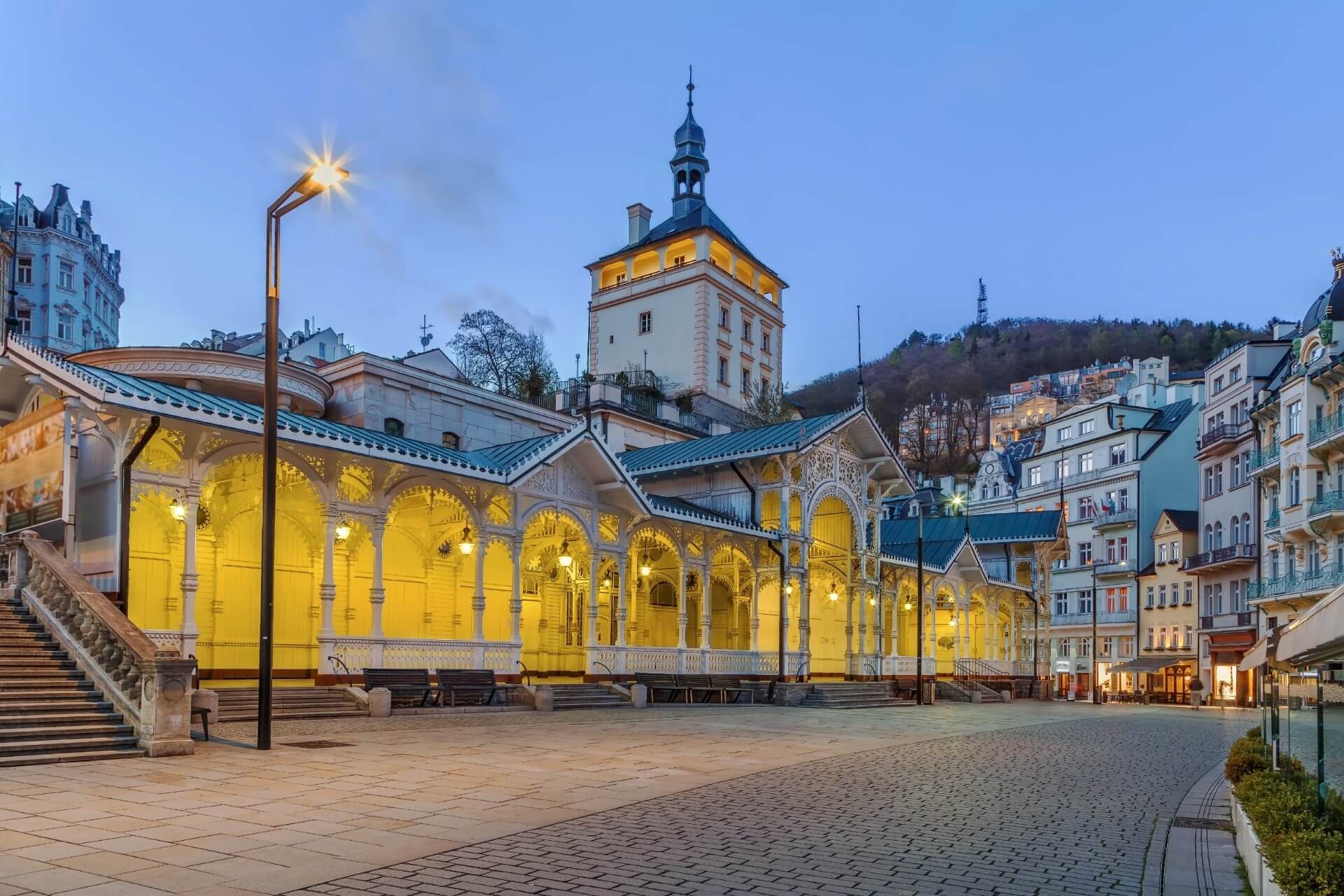
In 1769, the famous Castle Spring was first captured. Renowned doctor Becher proved the water’s healing properties. A gazebo was built over the spring in 1797, replaced by a promenade designed by Josef Esch in 1830. Eighty years later, a new colonnade was built by architect Johann Friedrich Ohmann. It was intended to connect the Castle Spring and the Market Colonnade, forming a unified space. The structure was adorned with an Art Nouveau bas-relief.
Over time, the building deteriorated, and in 2000, it was rebuilt. The Castle Baths complex was constructed on this site, designed by architect Mikolas. The baths include the Lower and Upper Castle Springs and are accessible only to the establishment’s clients.
Lower Castle Spring
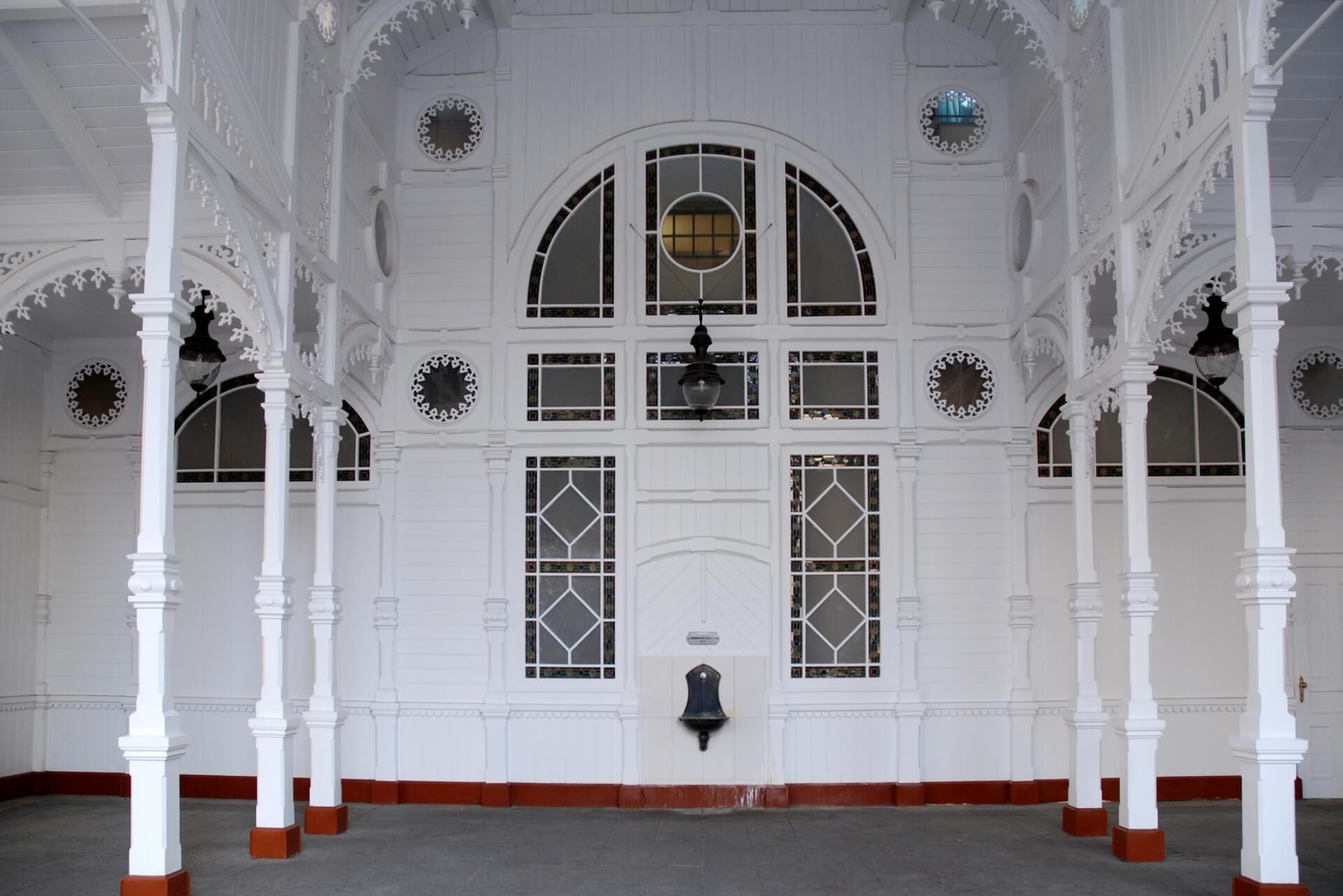
Located in the historic city center on the left bank of the Teplá River, the Lower Castle Spring is open to the public. The water temperature is 55.6 degrees Celsius, with a flow rate of 2.5 liters per minute. It contains 600 mg/l of carbon dioxide. The spring was first captured in 1769. In 1784, during a very cold winter, the townspeople were left without water, which was then delivered to public fountains from this spring.
At the same time, Dr. David Becher, after analyzing the water, found that its composition was similar to that of the Geyser. The first gazebo was built in 1797, but the spring disappeared underground 12 years later, reappearing on the surface only in 1823. The first colonnade was built in 1830, and 80 years later, it was rebuilt in the Art Nouveau style. It remained in this form for about 100 years until it was transformed into the Castle Baths, and the spring was redirected to the Market Colonnade.
Upper Castle Spring
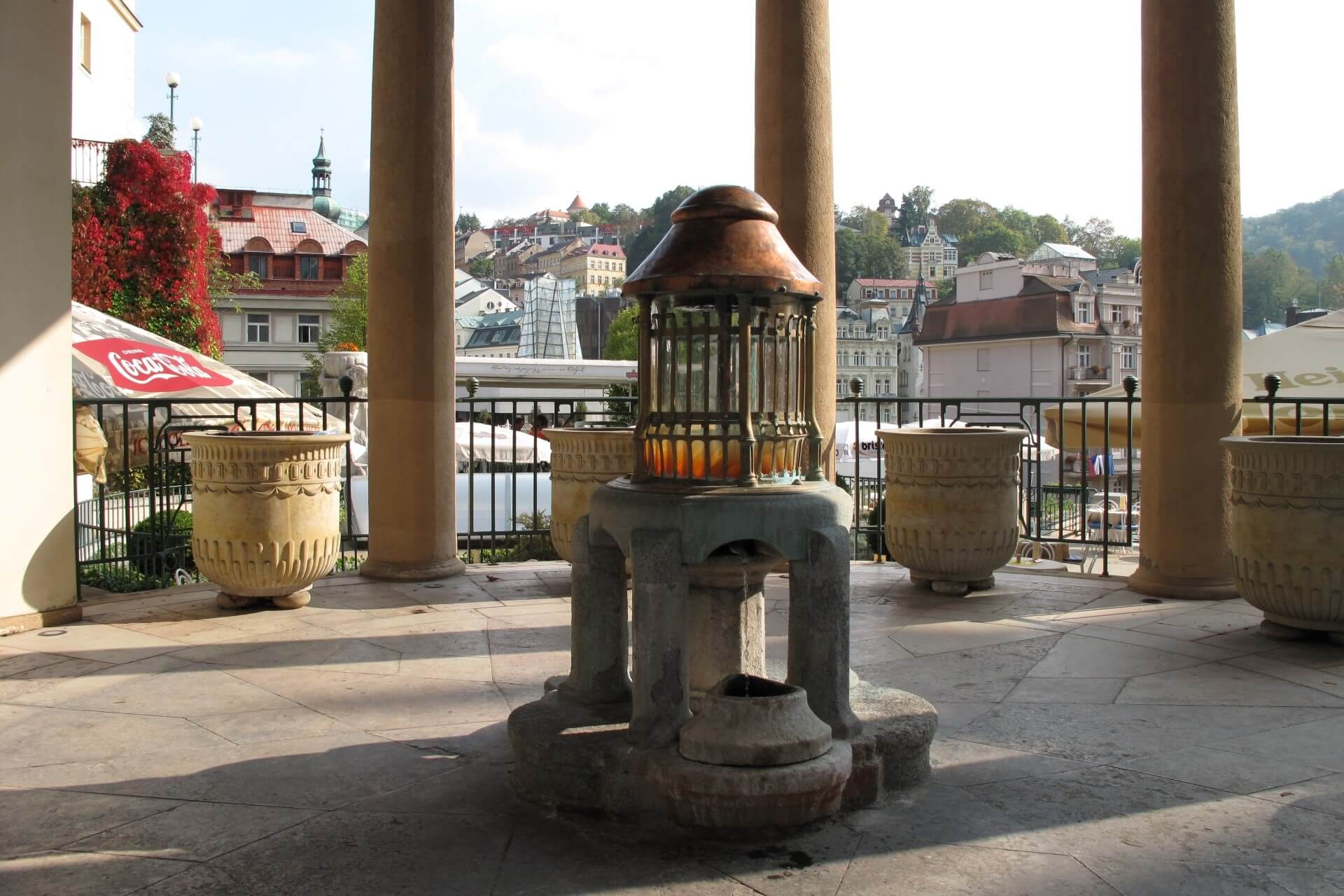
The water has the same origin as the Lower Castle Spring, but the flow is divided into two parts and delivered to two different vases. However, there are some differences. The Upper Castle Spring is located higher above sea level and has a temperature of 49.8 degrees Celsius. It also contains slightly more carbon dioxide — 763 mg/l. The spring is housed in a magnificent Art Nouveau pavilion. The flow rate is quite low — only 1.5 liters per minute. The spring is usually covered with glass, and only clients of the Castle Baths have access to it.
Snake Spring
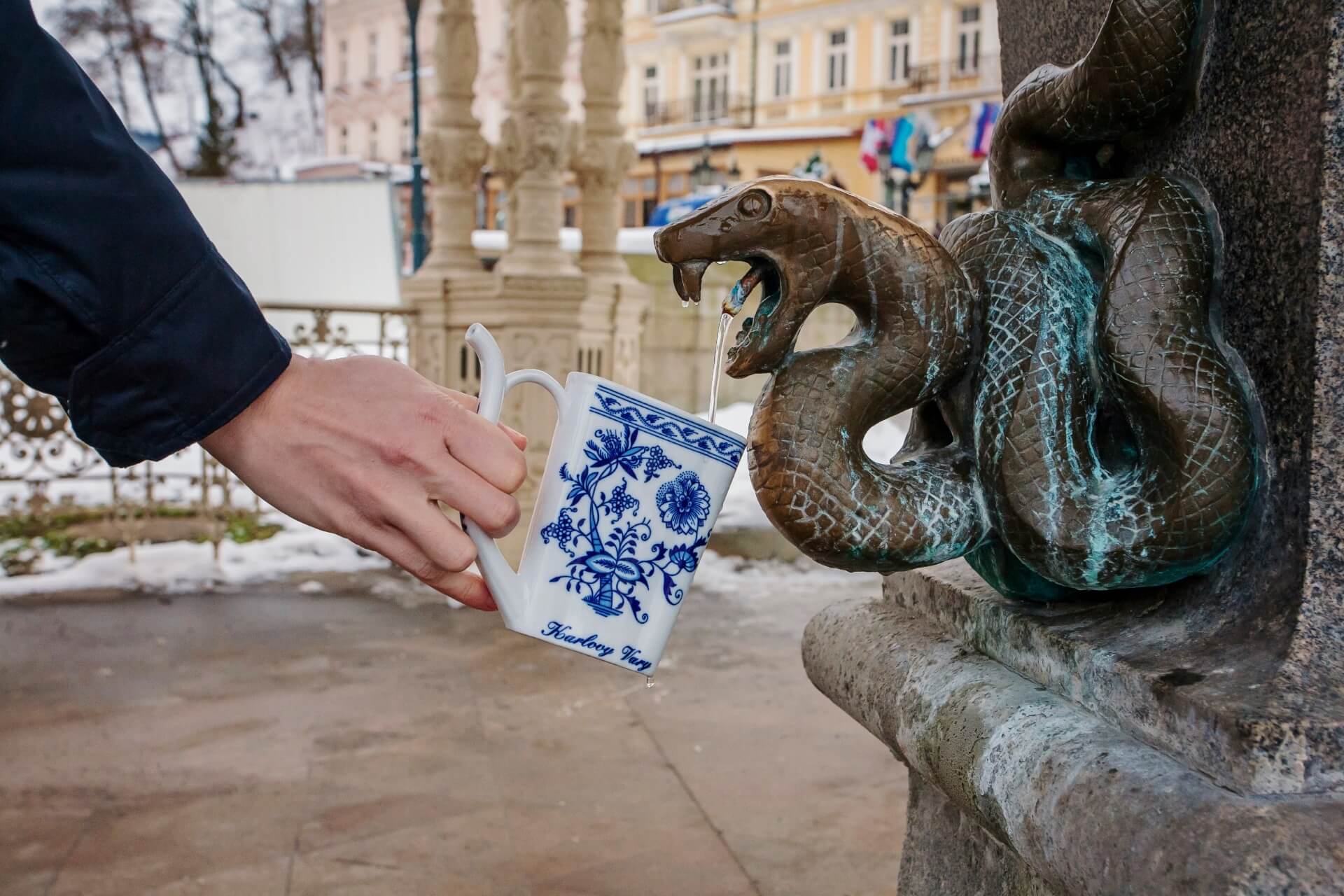
Located in the resort zone of the city within the Garden Colonnade, the Snake Spring was discovered in 2001, making it the newest spring. It has a flow rate of 1.8 liters per minute, with a water temperature of 30 degrees Celsius and a carbon dioxide content of 1.6 g/l. The spring got its name due to the many grass snakes found near the colonnades. This is reflected in its design — the low column is adorned with a snake image, from whose head water flows. The structure is topped with a decorative vase, with handles shaped like snakes. It is a 15-minute walk from the Geyser.
Mill Spring
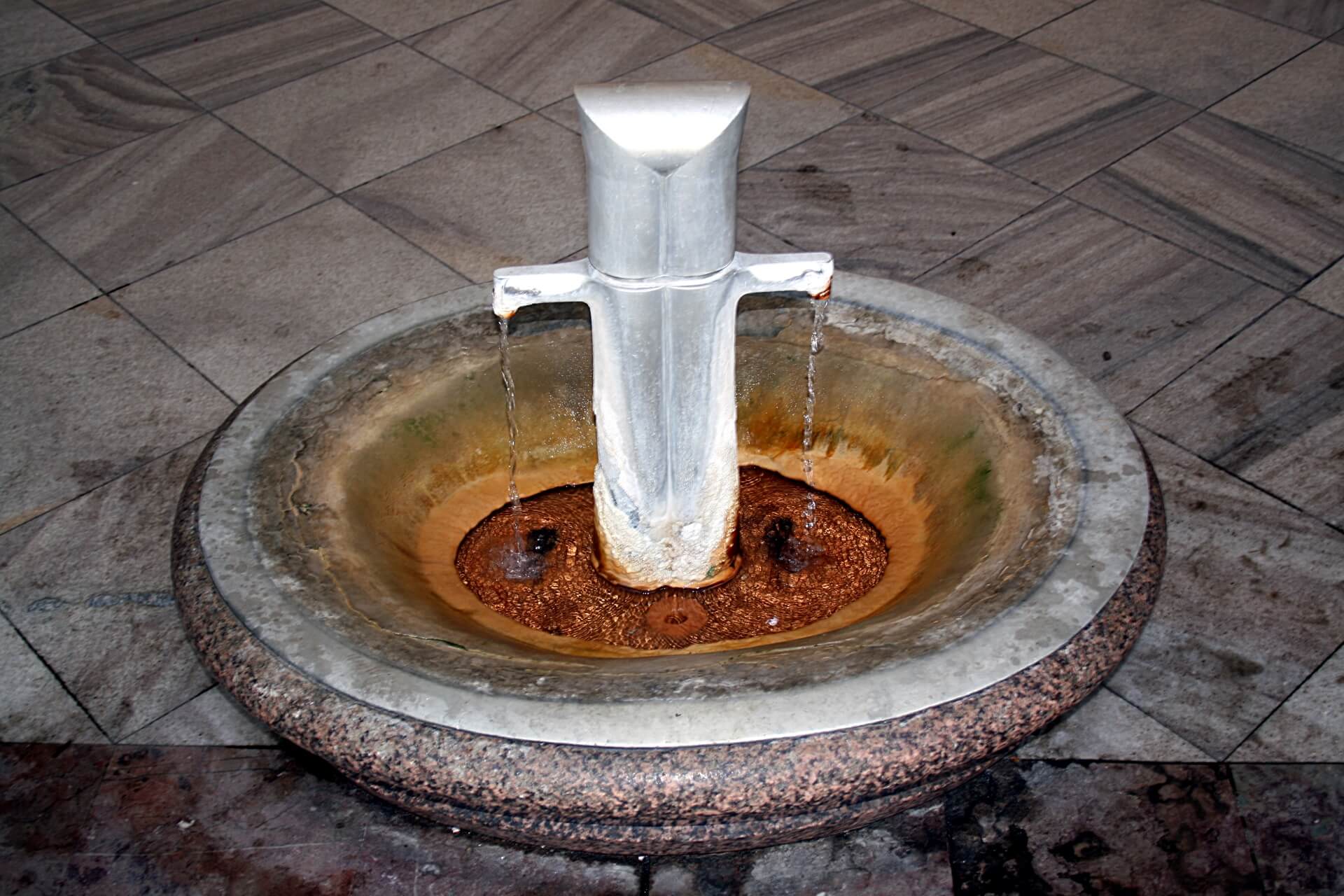
Residents of the city knew about the Mill Spring as early as the 16th century. It got its name from the mill that operated on the Teplá River until the late 18th century. The healing properties of the water were known for a long time, and by 1705, doctors were already prescribing it to their patients for treatment. Its popularity was so great that a special Mill Bathhouse was built in the Baroque style in 1711. The water was not only drunk but also used for healing baths.
In 1827, the Mill Promenade was renovated, transforming the area. The New Spring Colonnade was completed, and the bathhouse was demolished, replaced by a new beautiful pavilion. However, it did not last long. Architect Zítek’s project included the construction of the Mill Colonnade, which continues to delight residents and visitors to this day.
The water extracted here was so popular worldwide for its healing properties that it was even bottled and shipped to other countries. The water temperature is 56.6 degrees Celsius, with a flow rate of 4.5 liters per minute and a carbon dioxide content of 0.6 g/l. It is located half a kilometer from the Geyser, a 10-minute walk.
Dorothea Spring

In the southern part of the city, on the slope above the right bank of the Teplá River, lies the Dorothea Spring, discovered in the 18th century. It has a pavilion built over it. Since 2012, it has been closed to visitors and is only used for monitoring purposes. It is one of the stations that track the carbon dioxide content in the water.
The Dorothea Spring produces only half a liter of water and 45 liters of gas per minute. A small stream of weakly mineralized water flows into the Teplá River near the Charles IV Bridge. Previously, it was directed to the Dorothea Pavilion, built in the Empire style, and later to a small stone pavilion. It is a 30-minute walk from the city center.
Charles IV Spring
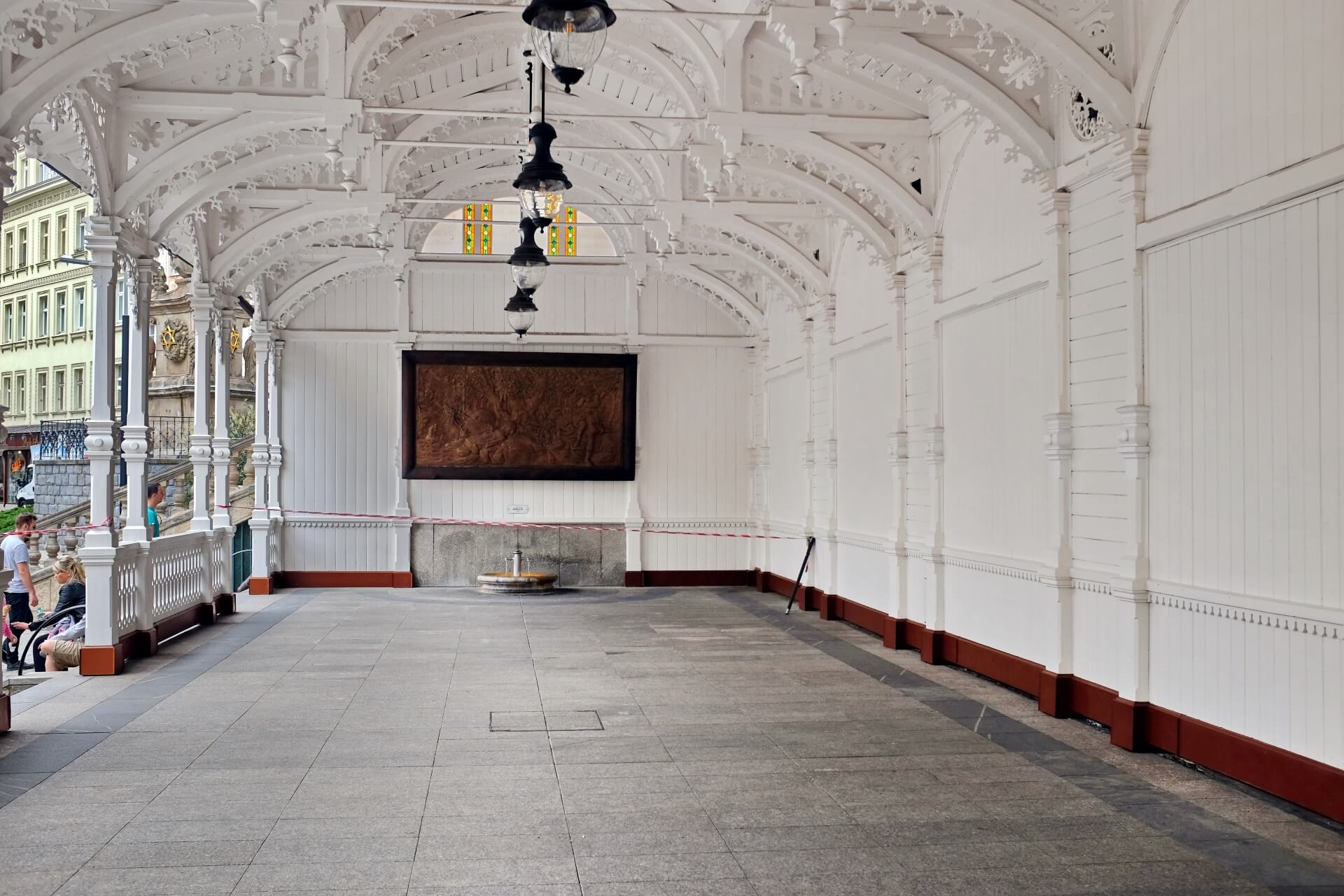
In the Middle Ages, a healing spring emerged on the Market Square. At that time, it was called Glutton (Žrout). According to an old legend, Emperor Charles IV healed his diseased legs there. This event was immortalized by blacksmith Adolf Zerkel in the bas-relief “Discovery of the Hot Springs by Charles IV.” In 1883, a wooden colonnade in the Swiss style was built over the spring, designed by Viennese architects Fellner and Helmer.
The water is quite hot — 64 degrees Celsius. It flows at a rate of 4.8 liters per minute and is rich in carbon dioxide — 250-450 mg/l. The spring is located in the historic city center, a five-minute walk from the Geyser.
Prince Václav Spring
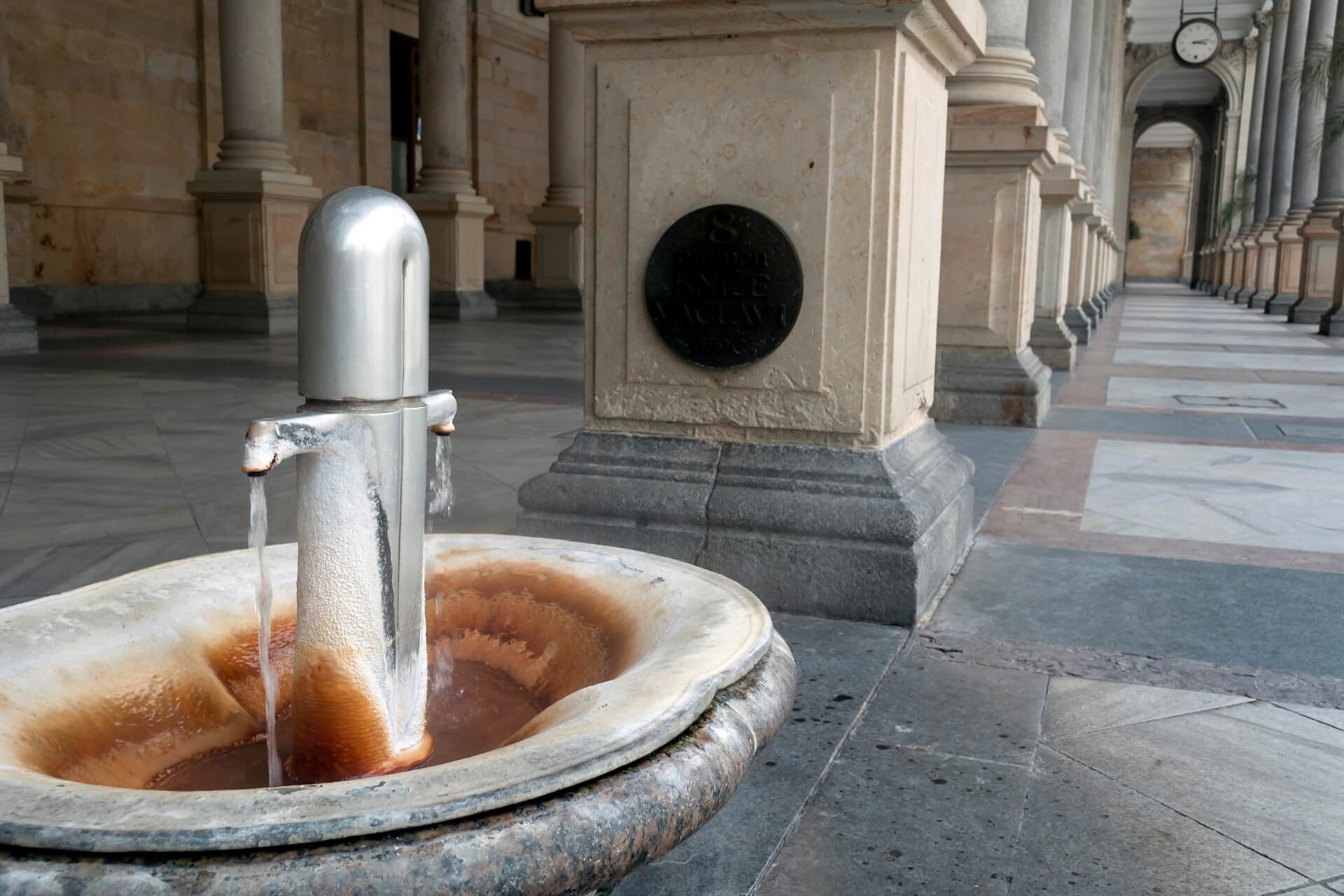
First discovered in 1784, the spring emerged from beneath Bernard’s Rock, initially named after it. A powerful water jet rose 4 meters high. The water from this spring was used to produce the famous mineral salts. In 1870, architect Zítek proposed a project for a colonnade, which was later built over the spring.
The water flow was divided into two parts and delivered to different vases. One vase has a flow rate of 4 liters per minute, with a temperature of 65.6 degrees Celsius. The other provides half as much water at 64.3 degrees Celsius. Each liter contains 0.5 grams of carbon dioxide. The spring is located in the resort zone, half a kilometer from the Geyser.
Libuše Spring
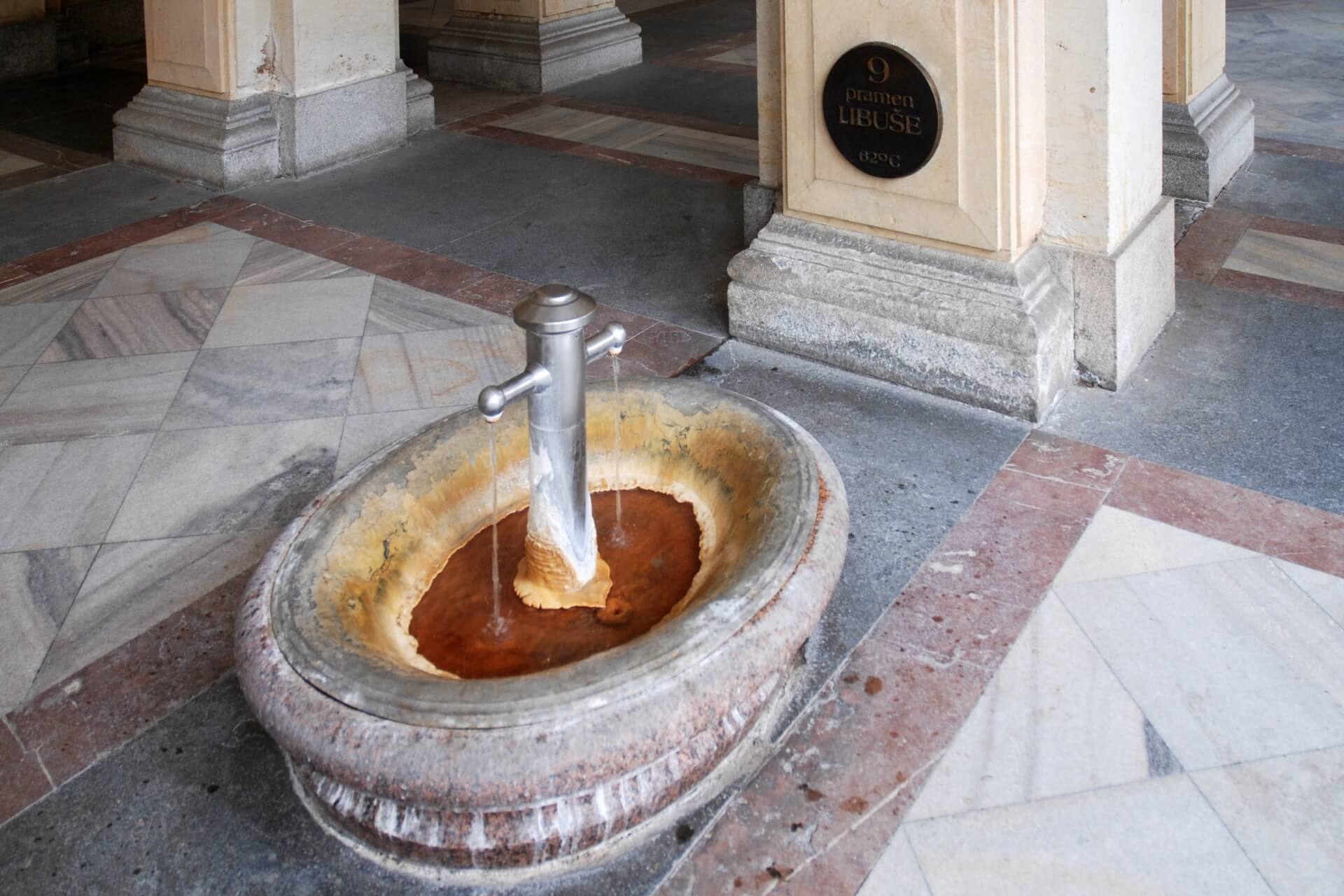
While constructing the new Mill Colonnade designed by architect Zítek, another water source was discovered. Four small springs merged into one stream and emerged at the site of the orchestral shell. Initially named “Rose Elisabeth Spring,” it was renamed “Libuše” in 1947. Its convenient location in the largest colonnade made it popular among visitors to the resort. The flow rate varies from 3 to 5 liters per minute, with a temperature of 62 degrees Celsius. Each liter contains 0.55 grams of carbon dioxide.
Mermaid Spring
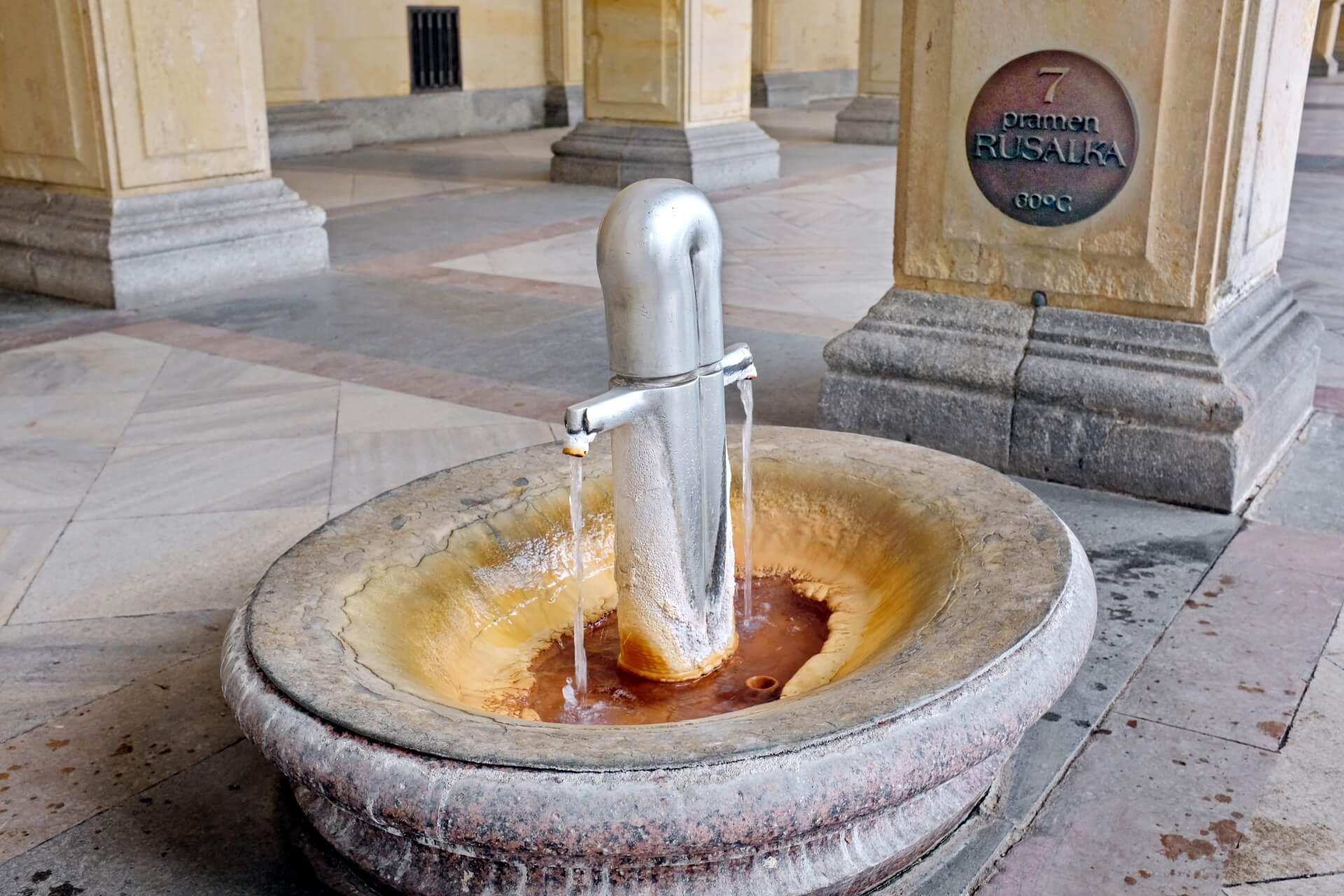
Known since the 16th century, the Mermaid Spring gained popularity in the mid-18th century under the name “New Spring.” It was located near the Mill Bathhouse and initially under a simple wooden canopy. Later, in the late 18th century, a promenade was built for walking after drinking the healing water.
Even bad weather could not interfere with the healing process. Doctors provided water treatments in the same area. By the early 19th century, this part of the resort was the most popular. In 1811, the old structure was demolished, and a new colonnade was built over the spring, which lasted 60 years.
Later, a stone promenade was constructed on the site. The water temperature is 60.2 degrees Celsius, with a flow rate of 4 to 7 liters per minute. Each liter contains 600 mg of carbon dioxide. It is a 10-minute walk from the Geyser.
Štěpánka Spring
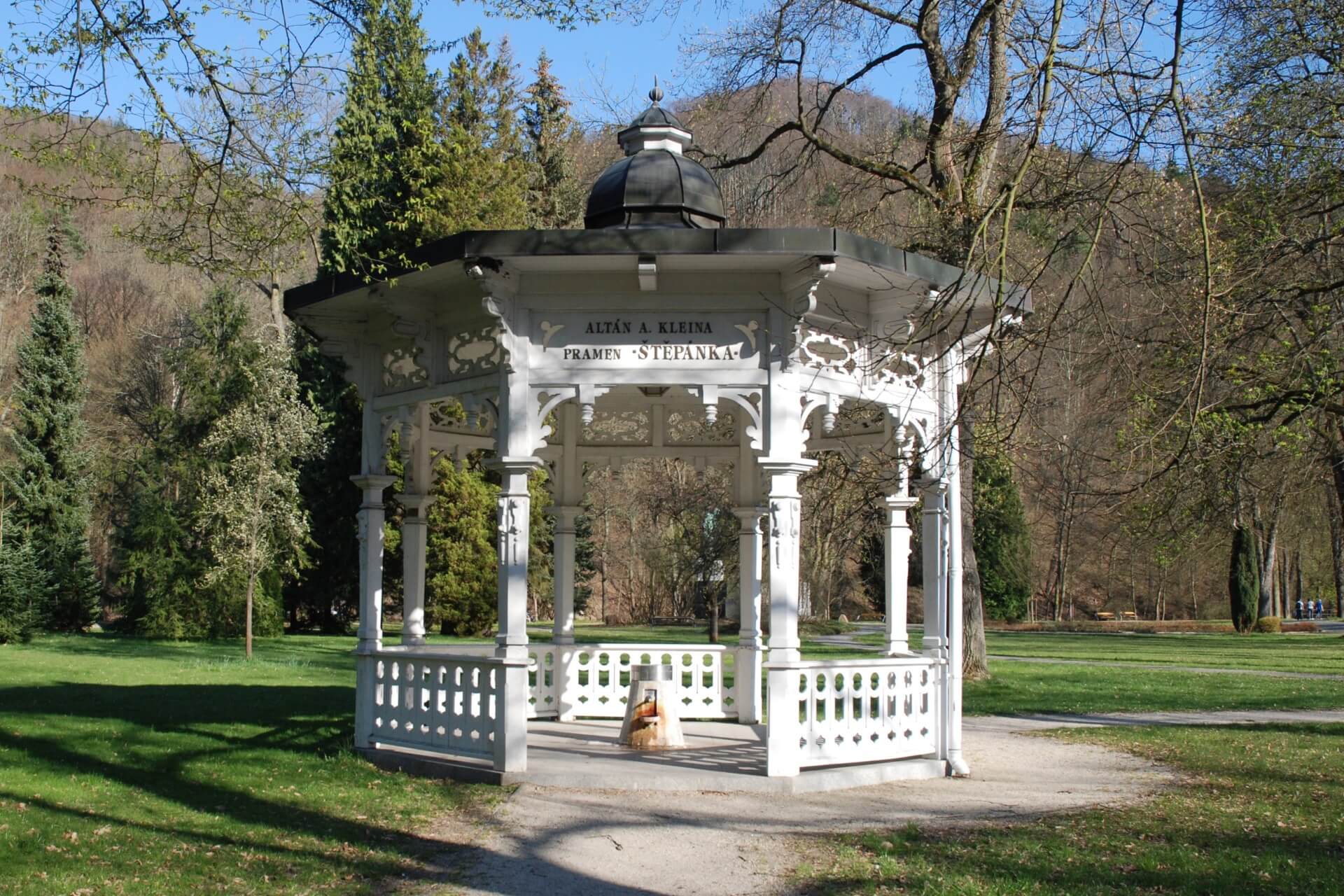
On the southern outskirts of the city lies the Richmond Hotel. In the park in front of it is the cozy octagonal wooden gazebo of Alois Klein, housing the fourteenth mineral spring. It was known in the 18th century but was captured only in 1884. The spring is named after Stephanie, Archduchess of Austria.
The water was immediately recognized as healing due to its iron content and acidic properties. However, people could only use it for a short time. The spring disappeared underground in the early 20th century. It was sought for nearly a hundred years and recaptured only in 1997, when a beautiful Swiss-style gazebo was built.
The spring provides 2.5 liters of cool water (temperature 13 degrees Celsius) per minute. It contains over 1.2 grams of carbon dioxide per liter. The water is rich in iron ions, making it popular among patients with anemia. It is one and a half kilometers from the Geyser, a half-hour pleasant walk through the old resort town. Štěpánka is still not registered as a natural healing resource.
Freedom Spring
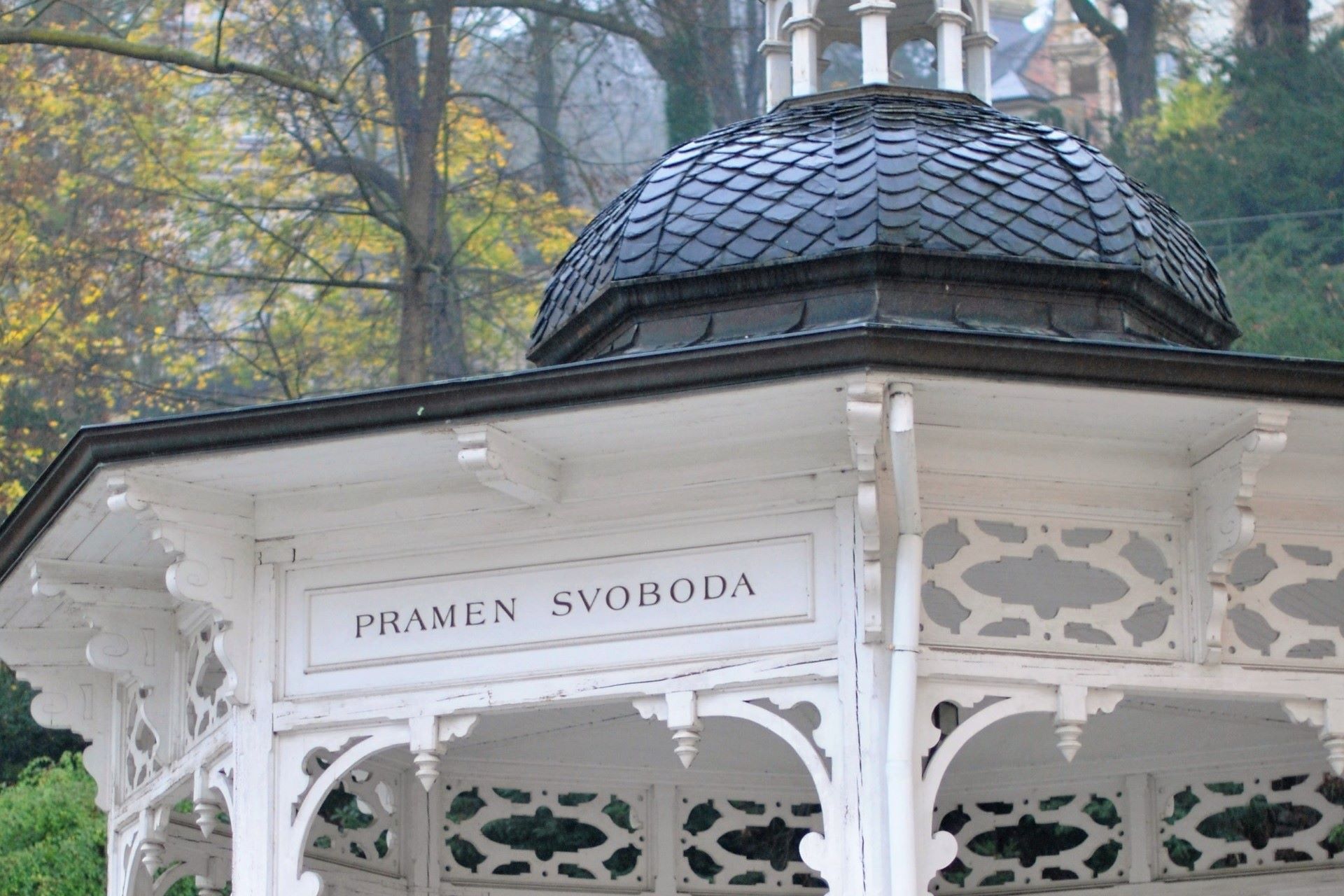
This relatively new spring was discovered in the 1860s. During the construction of the Lázně III Bathhouse, a water stream was found while laying the foundation. The spring was directed between the New Bathhouse and St. Bernard’s Hospital, located under the eponymous rock. Previously, there was also a Hospital Spring, which later disappeared underground. In 1865, a beautiful decorative pavilion was built.
The octagonal wooden structure blends harmoniously with the landscape. The name changed several times — initially called the Spa Spring, it was later named after Emperor Franz Joseph I, and in 1946, it was renamed “Freedom.” It is located 600 meters from the Geyser, near Lázně III. The spring provides 5 liters of hot water (temperature 62.4 degrees Celsius) per minute, with a carbon dioxide content of 0.55 g/l.
Garden Spring
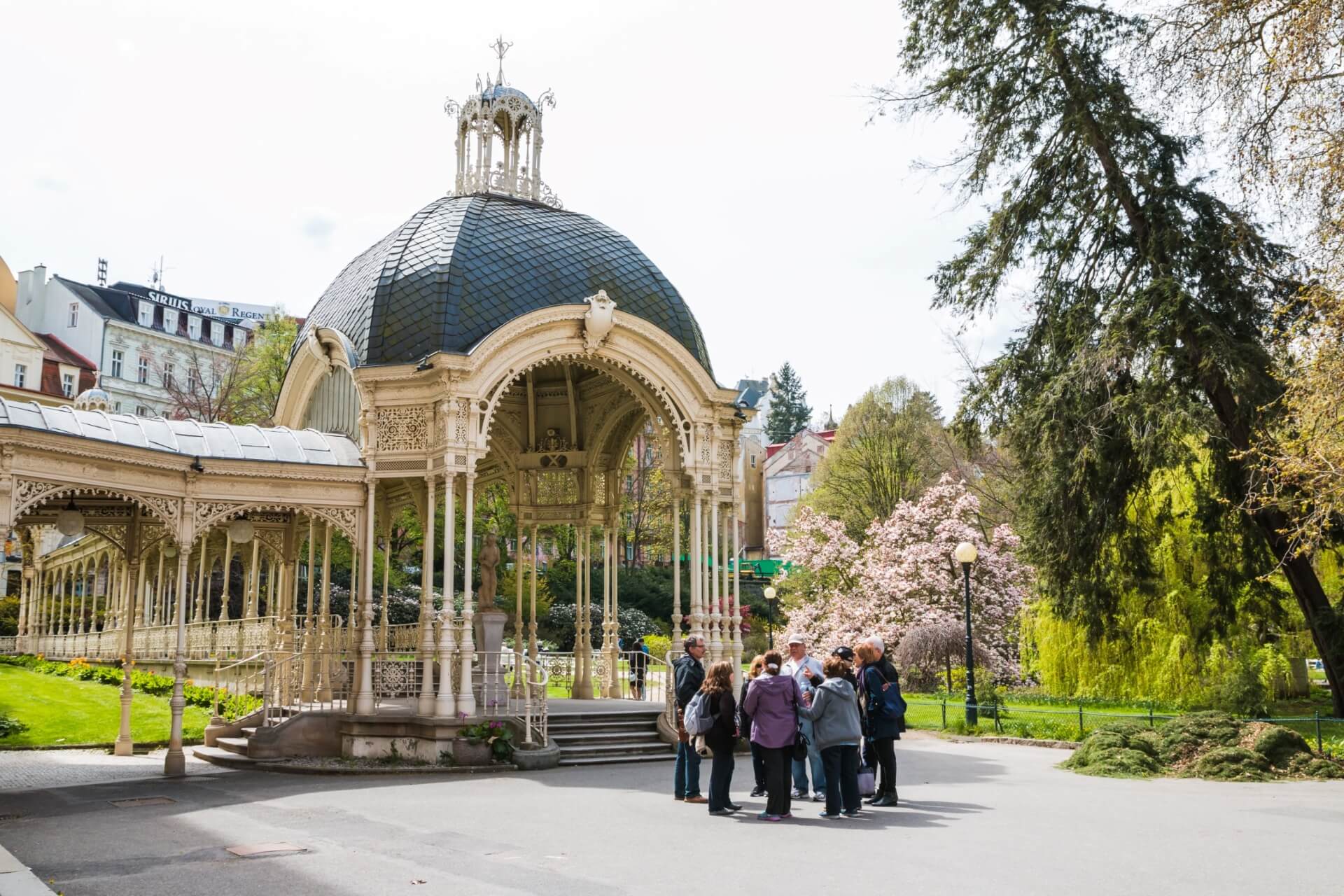
In 1852, the Military Sanatorium was established in Karlovy Vary. During the construction of its foundation, a water spring was discovered. Initially named the Imperial Spring, its water was used for sanatorium patients. The water flow is divided into two parts — one directed to the hall, the other to the basement. From 6:00 AM to 6:30 PM, visitors can taste this water with a subtle sour taste.
To reach it, walk from the Geyser towards the Garden Colonnade, located in Dvořák’s Gardens, about 800 meters, a 15-minute leisurely walk. The water temperature is almost 42 degrees Celsius, with a flow rate of 1.5 liters per minute. Each liter contains 0.75 grams of carbon dioxide.
Rock Spring
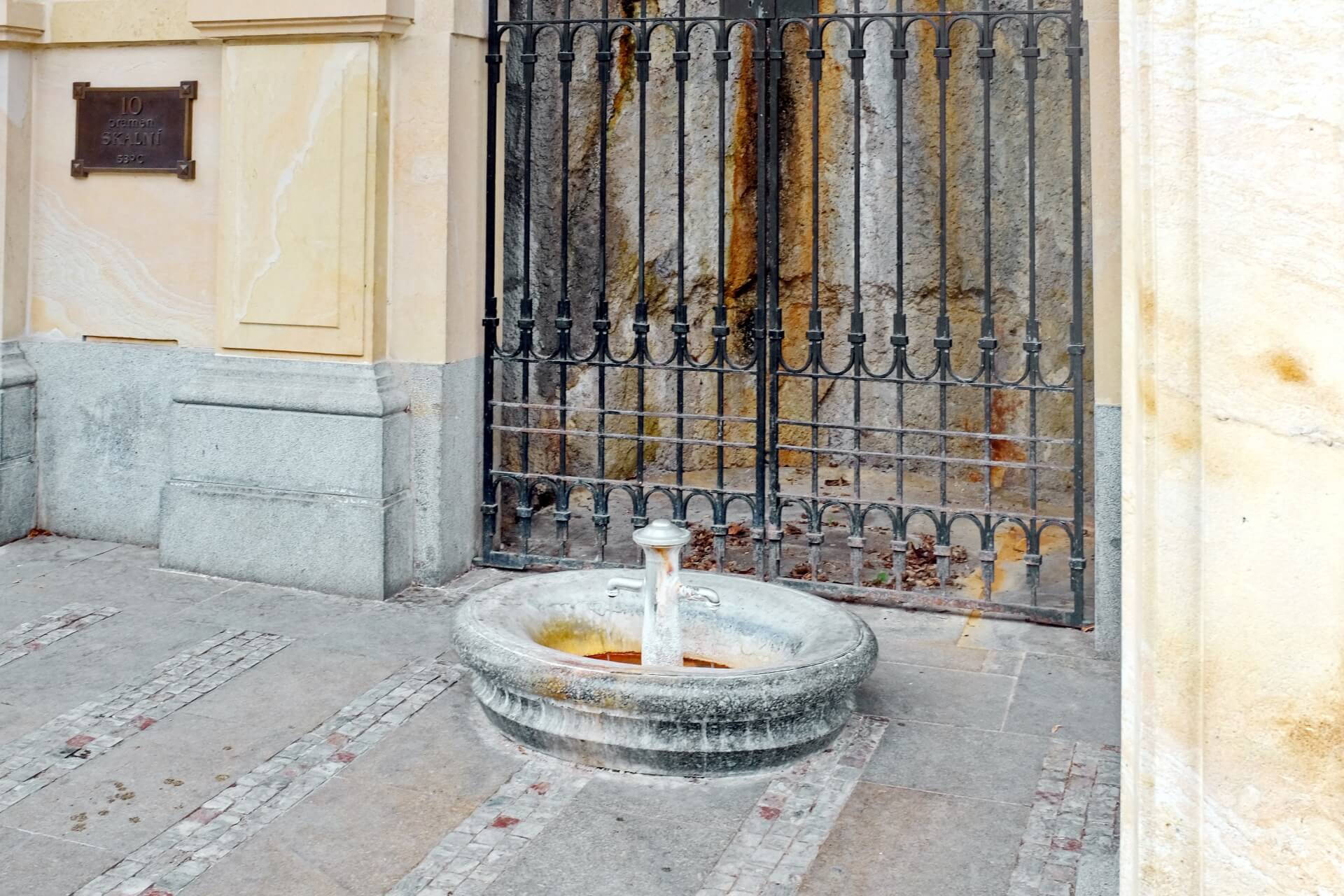
Previously, beneath Bernard’s Rock was a rather damp and marshy area where horses were brought to bathe. Locals called it the Horse Bathhouse. A thin stream of water emerged near the Teplá River, which became the future Rock Spring. It was captured in 1845 by breaking off part of the rock. A simple wooden canopy protected visitors from bad weather.
In 1892, the famous Mill Colonnade, designed by talented architect Zítek, was completed, and the Rock Spring received a new beautiful pavilion. The water is drawn from a depth of 30 meters through several wells. The temperature is a pleasant 48 degrees Celsius, with a flow rate of 2.2 liters per minute. Each liter contains 0.65 grams of carbon dioxide. It is located half a kilometer from the Geyser, under Bernard’s Rock, at the end of the Mill Colonnade.
Market Spring
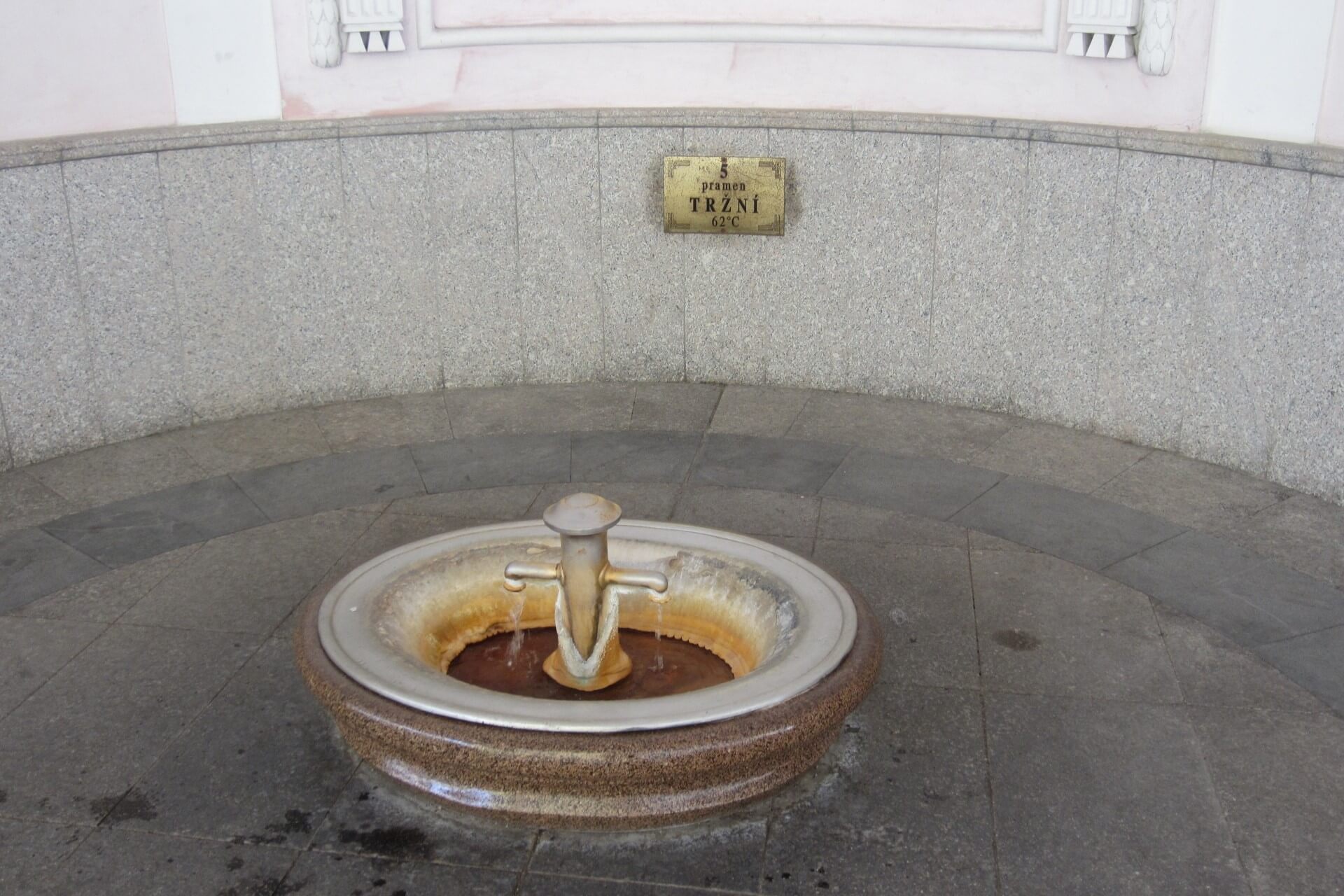
In 1838, construction work was being carried out in the city center, at Market Square. During the work, another water spring was discovered. The spring was unstable from the start, disappearing and reappearing. Several deep wells were drilled before achieving a consistent water flow. The water was initially directed to the Marktbrunn House’s first floor. Several resort houses already stood near the square.
The building was demolished in 1904, and a wooden Market Colonnade in the Swiss style was built, like many structures in Karlovy Vary. The place where the water flows is particularly interesting. It is a semicircular apse with stunning acoustics, often used for concerts. The spring is located just 200 meters from the Geyser. The water temperature is 62 degrees Celsius, with a flow rate of nearly 5 liters per minute. Each liter contains 0.5 grams of carbon dioxide.
This resort was popularized by the famous Dr. Becher. He developed a method for extracting salt, which became widely known as a laxative. The famous herbal liqueur “Becherovka” also bears his name. The sale of mineral salt and the resort’s famous visitors contributed to the city’s development, leading to its rapid growth. Unfortunately, much of the city was destroyed by fire during this period, with only one tower remaining from the royal castle. Most buildings were rebuilt as they were beyond repair.
Karlovy Vary experienced a period of prosperity in the 19th century, even despite the Napoleonic wars. Every day, noble patients strolled along the promenades from one spring to another. Many grand dukes and heads of state visited incognito. After World War II, the resort town was nationalized and quickly developed.
It is only 118 km from Prague, making it easily accessible. You can take a guided tour for the most comfortable experience, including guide services. Alternatively, special yellow buses depart from Florence Station in Prague every hour, taking two hours to reach Karlovy Vary.
The most famous attraction is the hot thermal springs, which are easy to find as they are mostly located close to each other. The higher the water temperature, the more mineral salts are dissolved in it, but the carbon dioxide content is lower. Conversely, cooler springs have more carbon dioxide and less mineralization.
The resort’s symbol is the most popular spring — the Geyser. The water erupts from a depth of two kilometers, reaching heights of up to 12 meters. The water is very hot, reaching temperatures of 72-73 degrees Celsius. In the 1970s, colonnades and canopies were built around it. The Geyser supplies mineral water to all the city’s bathhouses.
The pavilion is open from 9:00 AM to 7:00 PM. The water is cooled to three different temperatures and supplied to several drinking fountains. You can also take an interesting underground tour of the Geyser, where tourists can see the underground springs and petrified objects used to make unique jewelry and souvenirs. The tour is available daily from late spring to early autumn, with tickets sold in the hall.
The least visited spring by tourists is the Iron Spring. It is the coldest spring at the resort, with a water temperature not exceeding 12 degrees Celsius. The water is rich in iron and arsenic compounds. However, the amount of arsenic is minimal, posing no health risk. Nonetheless, tourists rarely visit this spring. The baths are also very popular. They strengthen the immune system, positively affect the joints, improve the nervous system, and relax the muscles. You can enjoy these baths in both hotels and old bathhouses.
In addition to health benefits, the resort offers visitors a large number of attractions, enchanting natural landscapes, and a vibrant cultural life. Representatives of European aristocracy still meet here (usually in April each year), and international festivals dedicated to ancient, modern, and classical music are held. There are also film festivals and frequent concerts.

